The exhibition explores four houses, all designed for performance, by and for people in a circle associated with the University of Illinois and the production of modernist culture in Champaign-Urbana from the 1940s through the 1990s. The project frames these houses as crucibles for producing and performing culture and that defined their residents as distinctively modern artists.
Supported in part by the Sandra L. Batzli Memorial Fund and the Kim and Peter Fox Exhibition Support Endowment. Cosponsored by Champaign County History Museum and the School of Architecture.
Additional support from James and Ruth Anderson; James A. and Lorene M. Bier; Terry and Sharon Harkness; Michael Hogue, The Michael Hogue Team, RE/MAX Realty Associates; Lisa and Abraham Kocheril; Alan T. Mette; Jeffery Poss Architect, PLLC; Jane and John Santogrossi; and William T. Tucker, BArch ’78, MArch ’81.
Krannert Art Museum acknowledges support from the Illinois Arts Council.
The four case studies—the Erlanger House, designed with and for the dancer Margaret Erlanger, and the homes of the architects Jack Baker, John Replinger, and A. Richard Williams—were created to stage music, dance, theater, poetry, and conversation in domestic settings, a unique characteristic of avant-garde culture in and around the University of Illinois. The architects have long been understood regionally as influential teachers and refined, modernist architects. Their greater impact, we propose, stems from their role as incubators of midcentury, avant-garde American culture.
This exhibition—including site-specific works of art by Dot Replinger and Shozo Sato—is explicitly a catalyst for future research. It presents a series of propositions that we expect students, artists, and scholars to interrogate and build upon. In this way, the exhibition is intended to gather new research during its run at Krannert Art Museum rather than present firm conclusions.
An exhibition like this one is a huge team effort. We would especially like to thank Tim Fox, Kathryn Koca Polite, Christine Saniat, and Rachel Lauren Storm at KAM, as well as the contributions of Andy Baker, Sara Bennett, Tori Beach, Pat Cain, Chris Enck, JP Goguen, Jennifer Gunji-Ballsrud, Darrell Hoemann, Sharon Irish, Jenny Johnson, Phillip Kalantzis-Cope, Diana Liao, Michael Marder, Yuri Marder, Lowell Miller, Katie Nichols, Jameatris Rimkus, Scott Schwartz, Andrew Stengele, and Jamie Turpin. We also thank these students from the School of Architecture, the Department of Landscape Architecture, and the Department of History: Mary Baker, Liam Carroll, Francesc Guix Claramunt, Xiteng Duan, Adeline Evans, Patrick Hong, Anna Cadihac Lafuente, Ke Li, Dale Mize, Vaishnavi Nataraj, Carolyn Newquist, Sarah Matthews Oomen, Josep Calvet Rubio, Yasmine Shilleh, Tianyi Sun, Sophia Warner, and Jingsi Yu.
Curated by David Hays, Professor and Brenton H. and Jean B. Wadsworth Head, Department of Landscape Architecture; Kathryn Holliday, Randall J. Biallas Professor of Historic Preservation and American Architectural History, School of Architecture; Phillip Kalantzis-Cope; Jeffery S. Poss, Professor Emeritus, School of Architecture; and Jon L. Seydl, Krannert Art Museum Director.
. . . . . . . . . . . . . .
View architectural sketches and detailed plans, video tours of the featured homes, audio recordings, historical photographs, and beautiful reproductions of 150 pages from Dot Replinger’s sketchbooks:




